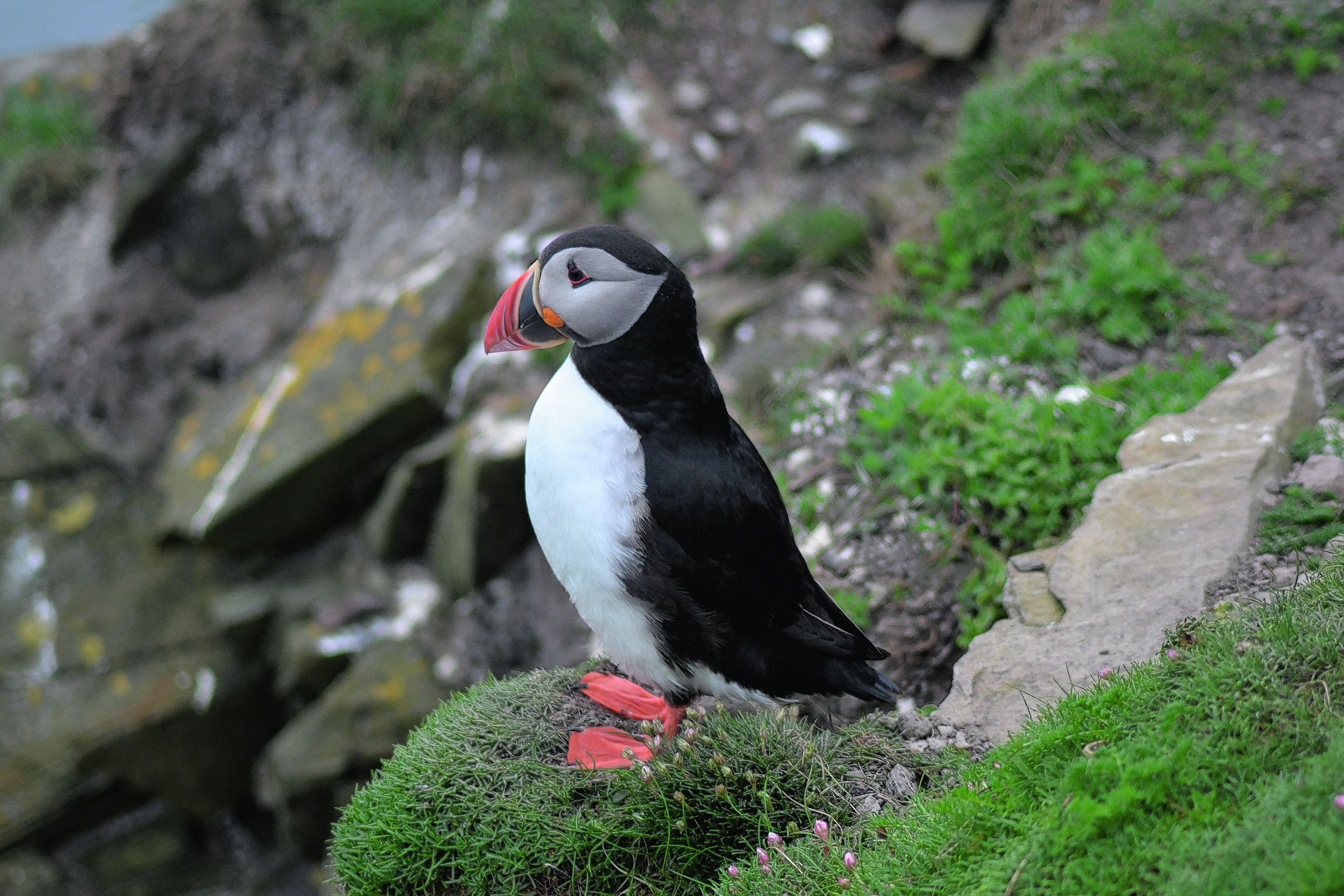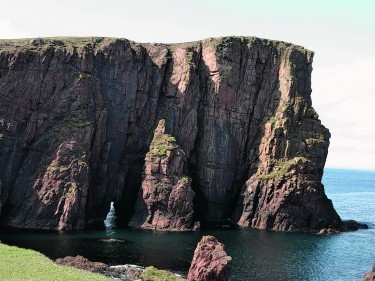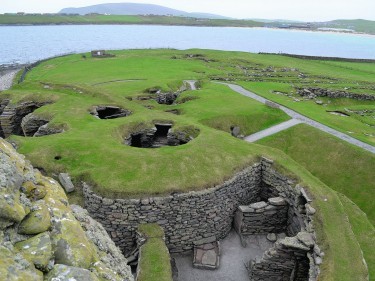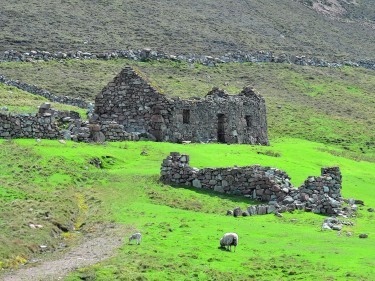A sense of deja-vu gripped me as the Loganair plane glided across Sumburgh Head and landed at Shetland’s main airport.
My wife and I had visited the islands two years previously and given that we had liked it so much and still had places to explore, we had decided to come back. But would it live up to our expectations?
We picked up our hire car, a small Ford Ka, which proved ideal for the many single track roads with surfaces drivers on mainland Scotland can only dream about.
Our first stop was at the home of Beth and Ian Cummings in Scalloway, our comfortable bed and breakfast base for the week and well situated to visit all parts of Shetland with ease. Beth also acted as our unofficial tour guide pointing out areas to visit off the beaten track while Ian, who travels throughout Shetland on a daily basis, was our roving amateur weatherman as it can be thick fog on the east coast while the west is bathed in sunshine.
We started our second exploration of Shetland at Sumburgh Head in the south mainland, an RSPB Reserve and haven for seabirds.
From the car park there is an uphill walk to the lighthouse perched high upon the cliffs. There are views towards Noss and Fair Isle but the main attraction must be the thousands of noisy seabirds nesting on the rocky outcrops.
Fulmars, kittiwakes, razorbills, guillemots and, of course, the delightful puffins are among those which use the rocks to breed. We were disappointed with the small numbers of puffins that we could see as most were apparently out at sea catching sand eels.
However, right on cue a puffin appeared from a nearby burrow, gave us a long searching look, dismissively shook its head and went back in. We were thrilled by this close encounter of the best kind.
Below Sumburgh Head and next to the airport lies Jarlshof, the largest and most striking archeological site on Shetland.
This prehistoric and Norse settlement was exposed during a violent 19th century storm and provides an insight into the lives of the inhabitants of the area from neolithic times.
Display boards and audio handsets help to paint a picture of how life must have been for these intelligent and practical people. The countryside in this area is green farmland in comparison to the peat bogs which extensively cover other parts.
We meandered along narrow roads passing lochans and white sandy beaches, deserted apart from seals basking on the sands.
Our destination was St Ninian’s Isle which we had seen earlier from a vantage point on top of a hill. It can be reached by a strand pummeled by Atlantic breakers on both sides and makes for an interesting walk.
Driving east again visitors will come across the restored watermill at Quendale and the Crofthouse Museum, both providing an insight into the lives of 19th century rural Shetlanders.
The next two days were spent north of Scalloway, rediscovering the inlets and hills of the east and west coasts which we had visited previously but enjoyed anew with the changing coastlines and landscape punctuated by small villages with their obviously thriving communities.
A particular favourite for us is Eshaness, an exposed headland dominated by its lighthouse to warn seafarers away from the spectacular red granite cliffs which look on to small islands and rock formations arising from the sea. It’s hard not to be captivated by the beauty of the area during the extensive cliff-top walks.
Not far away is the Braewick Café where welcome snacks are available with a vista capturing rugged headlands and sea stacks. It’s also worthwhile stopping at the nearby Tangwick Haa Museum situated within the former Cheyne family house, and giving access to local history information through photographs and documents with some focus being placed upon World War I and the sacrifices local men had made.
There is also a small family history research section containing parish registers and census records for the area, a boon for ancestor seekers. We found it to be a surprisingly good museum in such a remote place.
A much larger museum took up our attention the next day when we visited the Shetland Museum in Lerwick which is a must for any visitor. It can be kept for the rainy day which does unfortunately occur even in Shetland but shouldn’t be missed at any price.
The history of Shetland is traced from the earliest times through to the present day with the role of the seas prominent in the ways they have shaped the islanders’ lives through fishing, trade and tragedy.
We completed our ‘museum’ day with a stop at the relatively new Scalloway Museum which emphasises the important role of Scalloway as a fishing port although its other well-documented claim to fame was as the eventual base of ‘The Shetland Bus’, a clandestine World War II operation where small fishing boats maintained a link with Norway to help sabotage Germany’s war effort. Next door and worth a look is Scalloway Castle built by the notorious Earl Patrick Stewart who was later hanged as a traitor.
Our last trip to Shetland had taken us to Unst so on this particular occasion we concentrated on two other islands, namely Yell and Muckle Roe. A pleasant 20 minute ferry crossing opens up Yell to the visitor.
Yell is reputed to be one of the best places to see the ‘abundant’ otters although like most of the ‘Tammie Norries’ on Sumburgh Head, they seemed to be avoiding us. We stopped at Burravoe, a pleasant village with an enjoyable walk around the bay.
We were barred from progressing further up the pretty east coast by roadworks so a drive up the peaty moorland countryside of the west coast took us to the attractive Sands of Breckon and Gloup where 58 men were lost when six ‘sixareen’ rowing boats were overwhelmed by violent seas during a deep-sea fishing expedition.
Our journey next day to Muckle Roe on the west side did not require a ferry crossing as it is served by a bridge. Having parked the car, a four-kilometre track took us across moorland to one of the most inspiring views on Shetland where red granite headlands known as the Hams tower above green fields which surround a loch.
On part of the walk we were privileged to be accompanied by a golden plover which seemed in need of some human company. We spent some time savouring the beauty of this isolated spot and were glad we had made the effort. They say a week is a long time in politics but it’s a very short time to take in what a wild and beautiful Shetland has to offer. The islands have nightlife and good eating places like many other places but also an irresistible uniqueness and charm not found elsewhere.
Where else would one see a bus-load of ‘twitchers’ disembark to look for a bluethroated robin? Will we return for a third visit? Undoubtedly!



